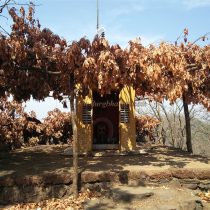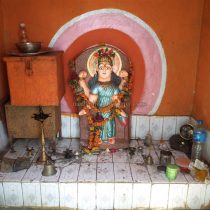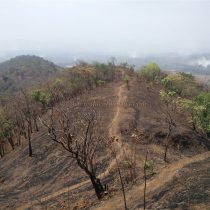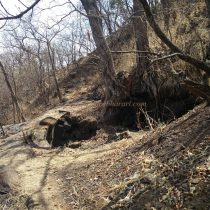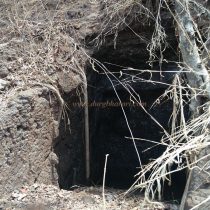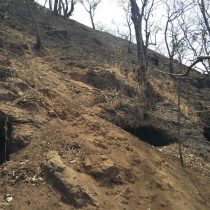MANIKDURG
TYPE : HILL FORT
DISTRICT : RATNAGIRI
HEIGHT : 900 FEET
GRADE : MEDIUM
Manikdurg aka Mandkidurg fort located in Mandki village in Chiplun taluka is at a distance of 8 km from Mumbai-Goa highway and 5 km from Savarde railway station. After the conquest of Vijayanagar, this part of the Konkan belt came under the control of Adilshah and he destroyed some of the forts in this area and these forts were forgotten. This fort came to the notice of the people due to the research done by Sachin Joshi, a historian of Pune. Even today, the locals and the people of this area do not know about this fort, so you should plan to visit the fort with enough information. This fort is known as the hill of Durga in the Mahadage Wadi at the base of the fort, so when you ask about the fort, you should ask for it as the hill of Durga rather than Manikdurg or Mandkidurg.
...
State Highway No. 105 passes through Savarde fork to Tavsal via Abloli. This road is 4 km from Savarde fork. In the distance, a small road leads to Mandki village on the left. Mahadgewadi is a village at the base of the fort at a distance of 2.5 km on this road. Mandki village is on the main road. Behind Mahadge Wadi, to the north, there is a range of three hills. Manikdurg is situated on the middle hill. If you have your car, keep it in the village as the next road is unpaved and there is no space to turn back the vehicle. After leaving the village and heading towards the fort, a dirt road leads to the hill. This road splits up into two parts in the end. The path on the left leads to a stream, while the path on the right goes up a hill. This first steep climb stage of the fort. After passing this stage, the path enters the dense trees. One thing to keep in mind while going to the fort is that the fort is on your right side therefore you should keep taking a right turn. The next stop is at a gorge between two hills. There is one of the ends of Manik Durg here. From this point, you can reach the upper part of the fort in half an hour by walking on the right side. It takes 1 hour to reach here from Mahadage Wadi. The height of the fort is 1734 feet above sea level and this triangular-shaped fort is spread over an area of four acres. From this part of the fort, you can reach the Sukai Devi temple by taking the left path. The temple of Goddess Sukai is situated on a quadrangle structure and the lower part of the temple looks like a bastion. From here one can see the trunk of the mountain descending. The size of the temple is very small and the newly constructed temple has an idol of Goddess Sukai. Adjacent to the Sukai Devi temple is a circular hill. Remains of Manikdurg are scattered around this hill. After crossing a difficult path on the left side of this hill, you can see 5 rugged caves on the slope in the belly of this hill. Three of these caves are in a straight line, the first is slightly larger, the second is smaller and the third is larger. In the third cave, there is a pillar. The other two caves are like a cistern. These caves and cisterns are on the same side of the fort. After seeing the cave, come back to Sukai temple and climb the hill on the right side. From this hill, on the opposite side of the Sukai Devi temple, we can see two cisterns at each end and a small cave on the hillside. In one of these cisterns, there is a Shivling carved and on the other cistern there are Yaksha images carved but they are worn out beyond recognition. The straight path from this cistern leads to the original path we came to. This is where your fort round ends. Half an hour is enough to complete the fort round. There are no remnants of the ramparts or the bastion on the fort. Manikdurg fort in Vijayanagar kingdom was in the possession of a man named Pawar. In ancient times, the goods landing at Palshet port used to go to Karhad market by this route. Navtedurg, Kasardurg, Manikdurg, and Bhairavgad forts were planned to keep an eye on this wharf route. These forts came under the control of Adilshah after his conquest of Vijayanagar. He destroyed these forts in the same period therefore they are not mentioned in Shivaji Maharaj’s period. Due to this, today, these forts only exist in history.
© Suresh Nimbalkar

